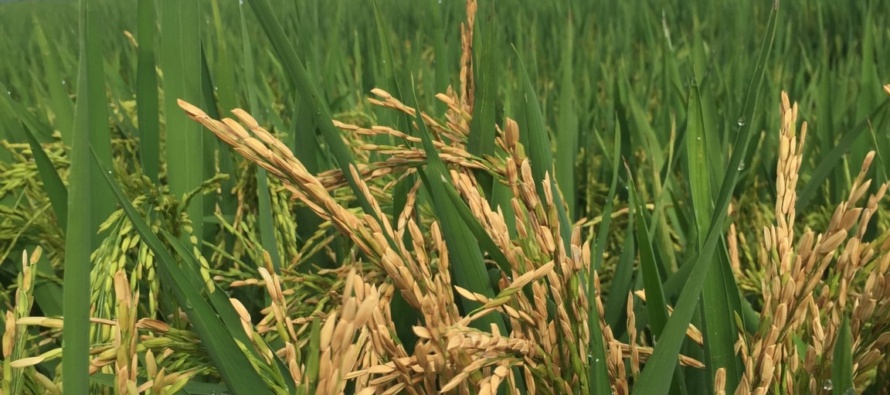Bacterial Panicle Blight of Rice Observed in Multiple Delta Fields

Related Articles
- Rice Variety Trial Results For 2010, Plus Rice Research Report 0
- Evaluation of Peanut Prescription Rx Program in Mississippi 0
- Flag The Technology 0
Latest Tweets
 Bacterial panicle blight has been a rare disease in MS rice production systems. Over the past several years, bacterial panicle blight has only been observed in years when high temperatures occurred for extended periods of time during flowering. The specific environment for disease development is generally considered to be hot, dry weather. But, high daytime temperatures are not the only requirement for the disease to occur. Nighttime temperatures in the high 70s to low 80s during grain filling periods can increase the risk associated with bacterial panicle blight.
Bacterial panicle blight has been a rare disease in MS rice production systems. Over the past several years, bacterial panicle blight has only been observed in years when high temperatures occurred for extended periods of time during flowering. The specific environment for disease development is generally considered to be hot, dry weather. But, high daytime temperatures are not the only requirement for the disease to occur. Nighttime temperatures in the high 70s to low 80s during grain filling periods can increase the risk associated with bacterial panicle blight.
The organism that causes bacterial panicle blight can be both seedborne and soilborne. A survey conducted several years ago in Mississippi rice production systems determined the organism to be present in both soil and water in several rice producing counties. Even though the organism may be seedborne, a conducive environment would be necessary for the disease to develop. In addition, most seedborne organisms, including the bacterial panicle blight organism, are present on or in the seed coat in extremely low concentrations.
The symptoms associated with bacterial panicle blight are generally first observed on the bottom of developing kernels. In advanced stages of the disease, bacterial panicle blight can result in panicles that remain upright in the field as a result of sterility. However, several other disorders can result in rice plants exhibiting sterility. The absence of parrot-beaking, which can result from such things as glyphosate injury is one key diagnostic feature associated with the disease. The upright panicles can be the result of sterile grain. However, upright panicles in a rice field as a result of bacterial panicle blight will not contain parrot-beaking which can be commonly associated with herbicide injury or the straighthead disorder as a result of arsenic. The grain discoloration associated with bacterial panicle blight is fairly unique. Banding across the kernel can be observed whereby alternating bands of light and brown coloration commonly occur. In addition, the banding pattern on kernels can be associated with stems that remain green. Panicles with disease can also develop secondary infection from saprophytic fungi that can make diagnosing bacterial panicle blight difficult. Infected kernels are more commonly observed beginning at the base of the panicle and can extend through the entire length of the panicle. 

In general, management practices do not reduce the presence of the disease. Fungicides are not active on the bacterial organism. As in the past, the fields affected appear to have been planted within a narrow window and were at susceptible/conducive growth stages during the hot, dry weather required for disease development.




Let me tell You a sad story ! There are no comments yet, but You can be first one to comment this article.
Write a comment